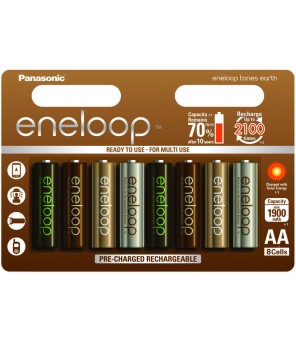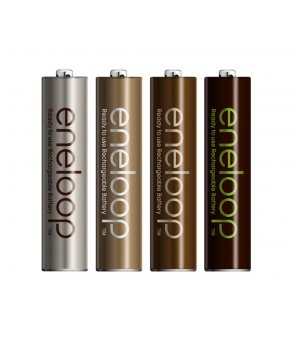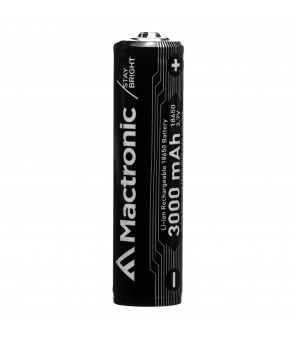Batteries, rechargeable batteries

Refine Search
Rechargeable batteries MIX 4 x R6/AA + 4 x R03/AAA Panasonic Eneloop BK-KJMCCE44E 8BE
4 x Panasonic Eneloop R6/AA Ni-MH BK-3MCCE Rechargeable batteriesIndications: R6/AA/MIGNON/BK-3MCCED..
27.97€
Panasonic Eneloop Tones Earth R6 AA 2000mAh pakraunamos baterijos, 8vnt
Limited edition of the highest quality Eneloop batteries, a renowned manufacturer combining aestheti..
22.95€
18650 battery Mactronic 3000mAh 3,7V with PCB
18650 battery Mactronic 3000mAh 3,7V with PCBCapacity: 3000 mAh (Samsung 18650 3000 mAh battery used..
14.99€
Batteries: Powering Our Modern World
Batteries have become an indispensable part of our daily lives. From smartphones to electric cars, batteries are everywhere, powering our modern world. But what exactly are batteries, how do they work, and what are the different types available? In this article, we'll answer these questions and more.
- What are batteries?
Simply put, batteries are devices that store and release electrical energy. They consist of one or more electrochemical cells, which convert chemical energy into electrical energy. Each cell has two electrodes: a cathode (positive) and an anode (negative), separated by an electrolyte. When the battery is connected to a circuit, a chemical reaction takes place, creating a flow of electrons from the anode to the cathode, generating an electrical current.
- How do batteries work?
Batteries work based on the principle of redox reactions, which involves the transfer of electrons from one chemical species to another. The chemical reactions taking place in a battery cause one electrode to lose electrons (oxidation) and the other electrode to gain electrons (reduction). This creates an electrical potential difference (voltage) between the two electrodes, which can be used to power a device.
- What are the different types of batteries?
There are many different types of batteries, each with its own unique characteristics and applications. Here are some of the most common types:
- Alkaline batteries: These are the most commonly used type of battery, found in everything from TV remotes to children's toys. They use an alkaline electrolyte and have a voltage of 1.5 volts.
- Lithium-ion batteries: These are the most popular type of rechargeable battery, found in smartphones, laptops, and electric vehicles. They use a lithium-ion electrolyte and have a voltage of 3.6-3.7 volts., or 1.5volts
- Lead-acid batteries: These are commonly used in cars, boats, and uninterruptible power supplies. They use a sulfuric acid electrolyte and have a voltage of 2 volts per cell.
- Nickel-cadmium batteries: These are another type of rechargeable battery, commonly used in power tools and medical devices. They use a nickel-oxide cathode and a cadmium anode, and have a voltage of 1.2 volts.
- Nickel-metal hydride batteries: These are also rechargeable batteries, commonly used in hybrid cars and cordless phones. They use a nickel-oxide cathode and a hydrogen-absorbing alloy anode, and have a voltage of 1.2 volts.
- Zinc-carbon batteries: These are the cheapest type of battery, commonly used in low-drain devices like clocks and flashlights. They use a zinc anode and a carbon cathode, and have a voltage of 1.5 volts.
Conclusion
Batteries have come a long way since their invention in the 1800s. Today, they power our modern world, enabling us to communicate, travel, and work in ways that were once unimaginable. Understanding the different types of batteries available can help you choose the right battery for your device, ensuring that you get the best performance and longest lifespan possible.




